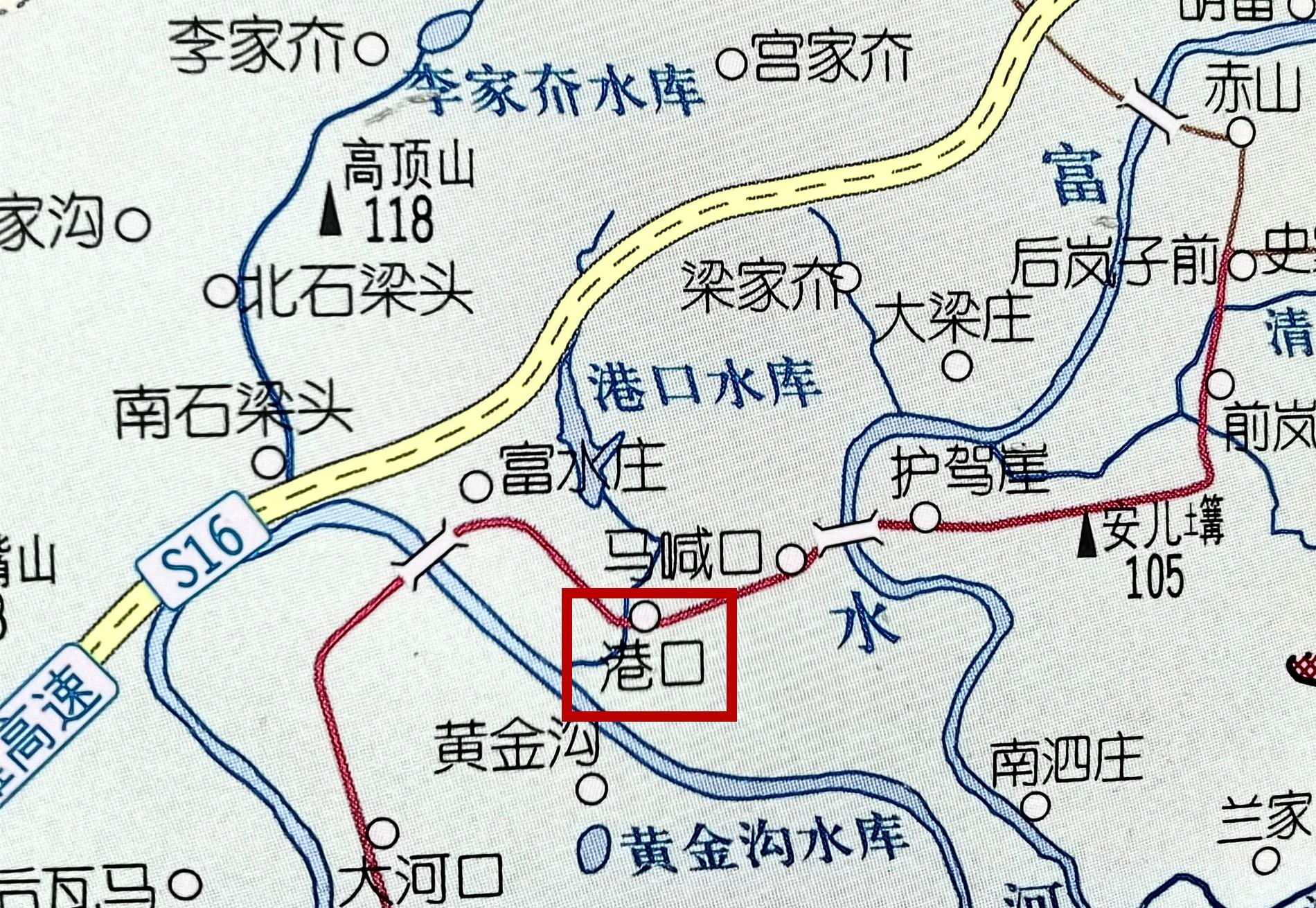Under the jurisdiction of Wandi Town, Laiyang City, Yantai, there is a "port village".
Friends who do not understand the specific situation in the field, Chad looks at this name and is easy to associate with the sea. But in reality, Wandi is an inland township. From the outside, port village is also more like a mountain village (the surrounding mountains are not too high).
About the origin of the name "port". The explanation of the "Laiyang City Gazetteer" is that the village was built on the north bank of the Fushui River in the middle of the Ming Dynasty, which is the main passage between the north and the south, taking the name of the village port.

(▲Location of Port Village)
According to the above statement, the "port" of the port is related to the Fushui River. Within the laiyang area, a similar example is luer port (also by the river) where the pears are abundant.
Although this article is related to the port village, it is not mainly about "place names", but "architecture".
The transportation of Port Village is relatively convenient, and the road between Wandi and Chishan passes through the village. A few days ago, when we went from west to east to Chishan, we passed through port village.
When I walked to the middle of the village, I glanced out the window and happened to see a quaint building. Ancient houses and ancient trees have always been our point of interest. Seeing that there were new discoveries, the author stopped temporarily and visited with friends.
It turned out that this was indeed a traditional building, with wooden prisms, gray tile roofs, and carved ornaments on the walls. Although the portal is a little rudimentary (it may have been remodeled later, the middle of the courtyard seems to be divided into two), and the stones of the gables are not too neat, but in the old Jiaodong countryside, this is already a "good house" - of course, it cannot be compared with those large estates.
Obviously, to build such a big house (it looks like five), you need to have a certain amount of economic strength. So, who built it?
Near this house, we were fortunate to meet an old man surnamed Jiang (there are many surnames in Port Village, jiang is one of them, it is said that he moved from Fodiantou Village, and the surname of Jiang in Jingou Village is close to him), and we heard some background introduction from him.
According to his recollection, this large house was probably built in the late Qing Dynasty and the beginning of the Ming Dynasty. At that time, a family in the village became rich in business in Qingdao, returned to their hometown in plain clothes, and built a big house in their hometown (similar situation, there are many in other villages in Jiaodong). It was just the specific name of the owner, which he could not remember clearly.
The old man surnamed Jiang said that in the past, there were other old houses in the village, although the scale was not as large as this one, but the total number was quite large. Later, with the development of the times, many have been renovated or rebuilt. The mansion has survived.
And the house that was built with heart at the beginning can really withstand the test of wind and rain. The mansion looks like it has been uninhabited for many years, but the main structure of the house is still relatively intact. It stands quietly here, reminding people of the past that there was a history worth telling.